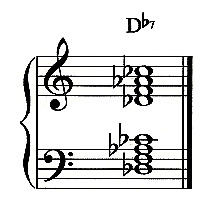

Note that matter how the notes are sharpened or flattened, the chord shown above is still a seventh chord, although the type of seventh chord changes. Put together, a “seventh chord” is chord composed of a triad and a note forming the interval of a seventh above the chord’s root (the lowest note). A seventh is formed by two notes that have an interval of seven letter names between them (eg. There are varying definitions of “chord,” but it typically refers to a harmonic group of notes (at least two, but usually three or more) sounded together. What are seventh chords?īut before we begin, let’s take a quick look at what a “seventh chord” is. In this article, we’ll explore the construction and uses of dominant and diminished seventh chords. We’ve probably already heard and played these chords in many pieces of music, without noticing the dissonance produced by these chords.

Nevertheless, when used appropriately, they sound perfectly beautiful and logical in the context of the whole piece. I remember asking my piano teacher what was the point of learning such harsh sounding chords. Unfortunately, they’re also rather dissonant and odd sounding. In fact, they’re so prevalent that the higher grades of the ABRSM examinations require students to know them by heart.

It’s hard to find a piece of music that doesn’t use either of these. Dominant and diminished seventh chords are common and important features of music.


 0 kommentar(er)
0 kommentar(er)
